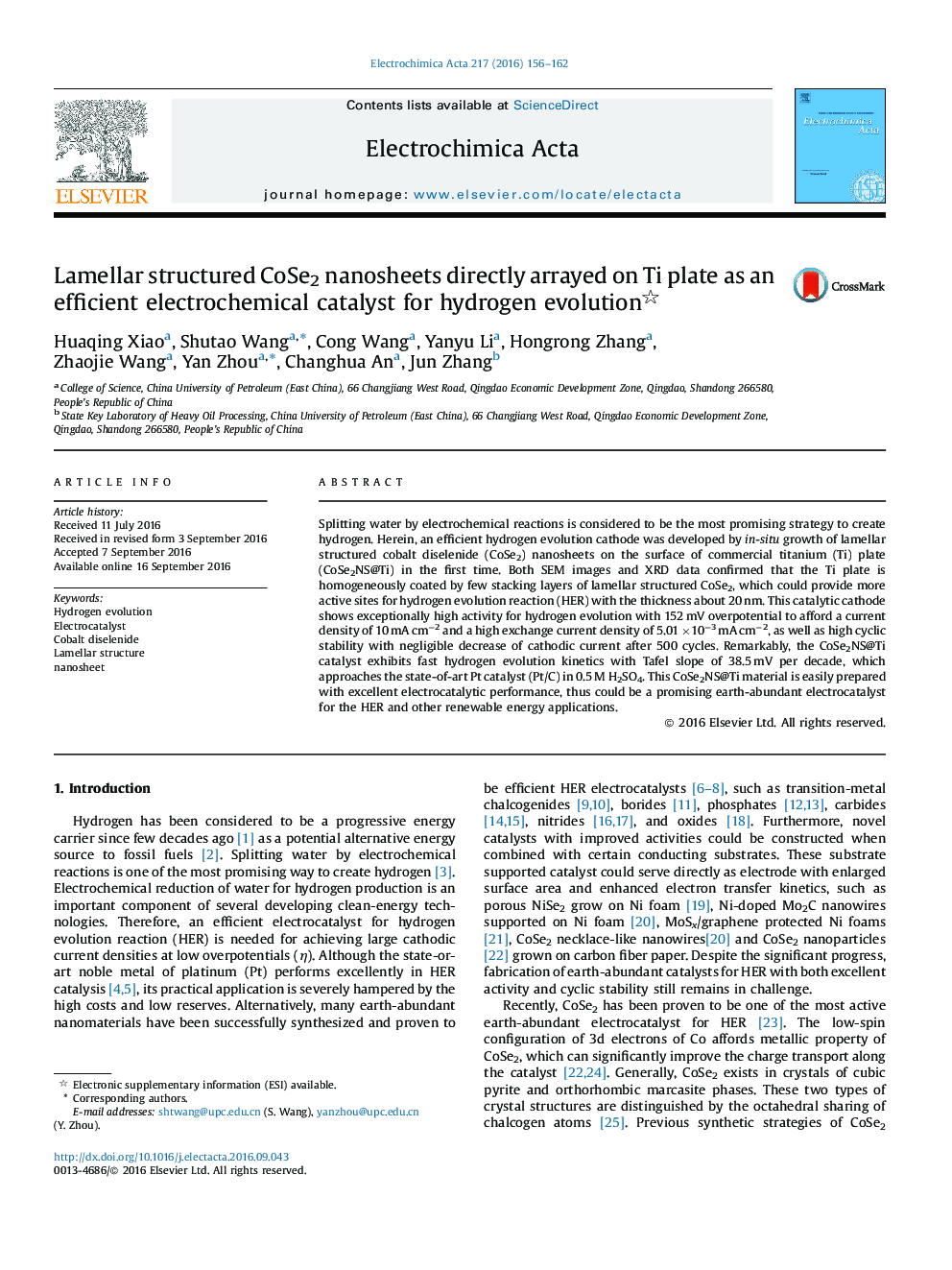| Article ID | Journal | Published Year | Pages | File Type |
|---|---|---|---|---|
| 6472803 | Electrochimica Acta | 2016 | 7 Pages |
â¢DETA controlled growth of lamellar structured CoSe2 nanosheet.â¢Direct growth of lamellar structrued CoSe2 nanosheets on Ti plate.â¢An efficient HER catalytic cathode.â¢Direct growth affording fast electrode kinetics.
Splitting water by electrochemical reactions is considered to be the most promising strategy to create hydrogen. Herein, an efficient hydrogen evolution cathode was developed by in-situ growth of lamellar structured cobalt diselenide (CoSe2) nanosheets on the surface of commercial titanium (Ti) plate (CoSe2NS@Ti) in the first time. Both SEM images and XRD data confirmed that the Ti plate is homogeneously coated by few stacking layers of lamellar structured CoSe2, which could provide more active sites for hydrogen evolution reaction (HER) with the thickness about 20Â nm. This catalytic cathode shows exceptionally high activity for hydrogen evolution with 152Â mV overpotential to afford a current density of 10Â mAÂ cmâ2 and a high exchange current density of 5.01Â ÃÂ 10â3Â mAÂ cmâ2, as well as high cyclic stability with negligible decrease of cathodic current after 500 cycles. Remarkably, the CoSe2NS@Ti catalyst exhibits fast hydrogen evolution kinetics with Tafel slope of 38.5Â mV per decade, which approaches the state-of-art Pt catalyst (Pt/C) in 0.5Â M H2SO4. This CoSe2NS@Ti material is easily prepared with excellent electrocatalytic performance, thus could be a promising earth-abundant electrocatalyst for the HER and other renewable energy applications.
